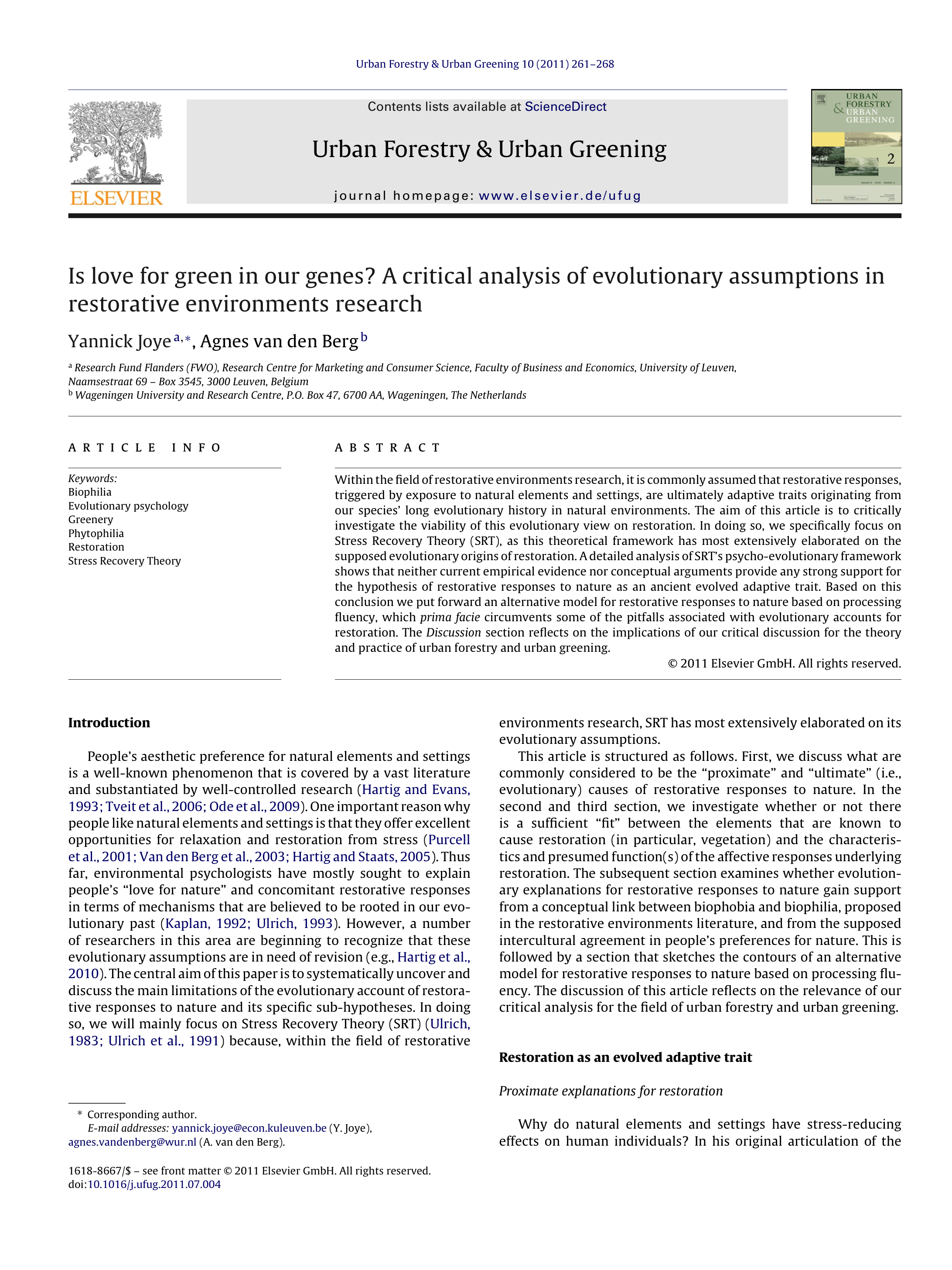Lately I’ve been reading about what makes environments restorative — those secret spots we go to feel whole, or grounded, or to be reminded of who we really are and what it’s really all about. What is it about those places? And are they only places? Or are they also the things we do when we’re in them?
There’s a good bit of literature out there already and I’m only scratching the surface of it at this point. However, I’ve scratched down enough to articulate some distinctions between the ideas people have and so I thought I’d write them up in an effort to share what I’m learning and also to watch how my understanding of these concepts evolves over time.
Attention Restoration Theory (ART) is an idea by Rachel and Stephen Kaplan, and I’ve blogged about it before. In ART, your attention is depleted by the demands of an environment and to restore it, you must get into an environment that has certain very specific features or conditions. It must feel like you’re 1) getting away, 2) that where you’re going is explorable and structured enough without feeling overwhelming or unsafe, 3) that what you want to do while you’re there is socially and physically possible, and 4) that it holds your attention without depleting it. This last quality, called fascination, is the magic of ART. It’s where the restoring bit happens.
Stress Recovery Theory (SRT) is an idea by Roger Ulrich. In SRT, one experiences stress and seeks out a restorative environment to recover. Nature, in particular water and vegetation, are especially restorative because from an evolutionary perspective, we perceive them as a resource rich (we will be more likely to survive near water and vegetation so it calms us). SRT is highly dependent on visual perception, and is a theory that relies on emotion: when we enter an environment, our bodies (and hearts) respond first, then our brains. We may cycle through memories and think about a space once we’ve had that initial emotional response, but the emotions are primary, and if we feel preference or aversion, those instincts will lead our way. In SRT, certain qualities of an environment are likely to cause us to calm down. The aforementioned water and vegetation are two (he calls these “natural features”), but there are others such as complexity, structure, depth and ground surfaces. These words have special meanings that I may blog about later, but essentially they all result in the perception that an environment is non-threatening, lacks tension, and is interesting.
And last, there’s Information Processing Fluency Theory (IPFT — sounds like a Myers Briggs score). This is a theory by, as best I can tell, Yannick Joye. I’m just digging into it and it’s far less cited or popular (and far newer) than the other theories, but here’s what I perceive the idea to be. Joye thinks we are not restored by nature, per-say, but by environments that are easy to process. This agrees and disagrees with parts of ART and SRT. For example, both theories suggest this concept in their own ways (“fascination” in ART is close, so is “complexity” in SRT), but neither theory relies on it the way IPFT does. Joye thinks nature’s restorative because it’s easy to process and he thinks it is easy to process because there is much “self-similarity” thanks to how fractal-based nature is. (I’ve got to admit that’s kind of clever.) What this does for restorative environments is that it opens up what’s eligible. Now, we can look at built environments as naturally restorative if we are (for a whole hosts of reasons, I’d imagine) highly fluent in processing the information within them.
So there. That’s what I’ve got today. I’ve a ton of reading and thinking still to do about all this, but how very interesting it is to explore these ideas and see how they respond to 1) contemplative space (as opposed to restorative space) and 2) pervasive and persuasive technologies that abound in nearly every space we go. More! Soon!
If you want to dig in more, might want to give these papers a read:
Kaplan, S. (1995). The restorative benefits of nature: Toward an integrative framework. Journal of Environmental Psychology, 15(3), 169–182.
Ulrich, R. S. (1983). Aesthetic and Affective Response to Natural Environment. In I. Altman & J. F. Wohlwill (Eds.), Behavior and the Natural Environment (pp. 85–125). Boston, MA: Springer US.







